Gandhinagar is the capital of the state of Gujarat in Western India. Gandhinagar is located approximately 23 km north of Ahmedabad, on the west central point of the Industrial corridor between Delhi, the political capital of India, and Mumbai.
Gandhinagar, Gujarat's new capital city, lies on the west bank of the Sabarmati River, about 545 km (338 miles) north of Mumbai, the financial capital of India and 901 km (560 miles) southwest of Delhi, the political capital.There is a provision of parks, extensive planting and a recreational area along the river giving the city a green garden-city atmosphere.
The Akshardham temple is located in Gandhinagar.There was a determination to make Gandhinagar a purely Indian enterprise, partly because the state of Gujarat was the birthplace of Mahatma Gandhi. For this reason, the planning was done by two Indian town planners: Prakash M Apte & H. K. Mewada, who had apprenticed with Le Corbusier in Chandigarh.
History
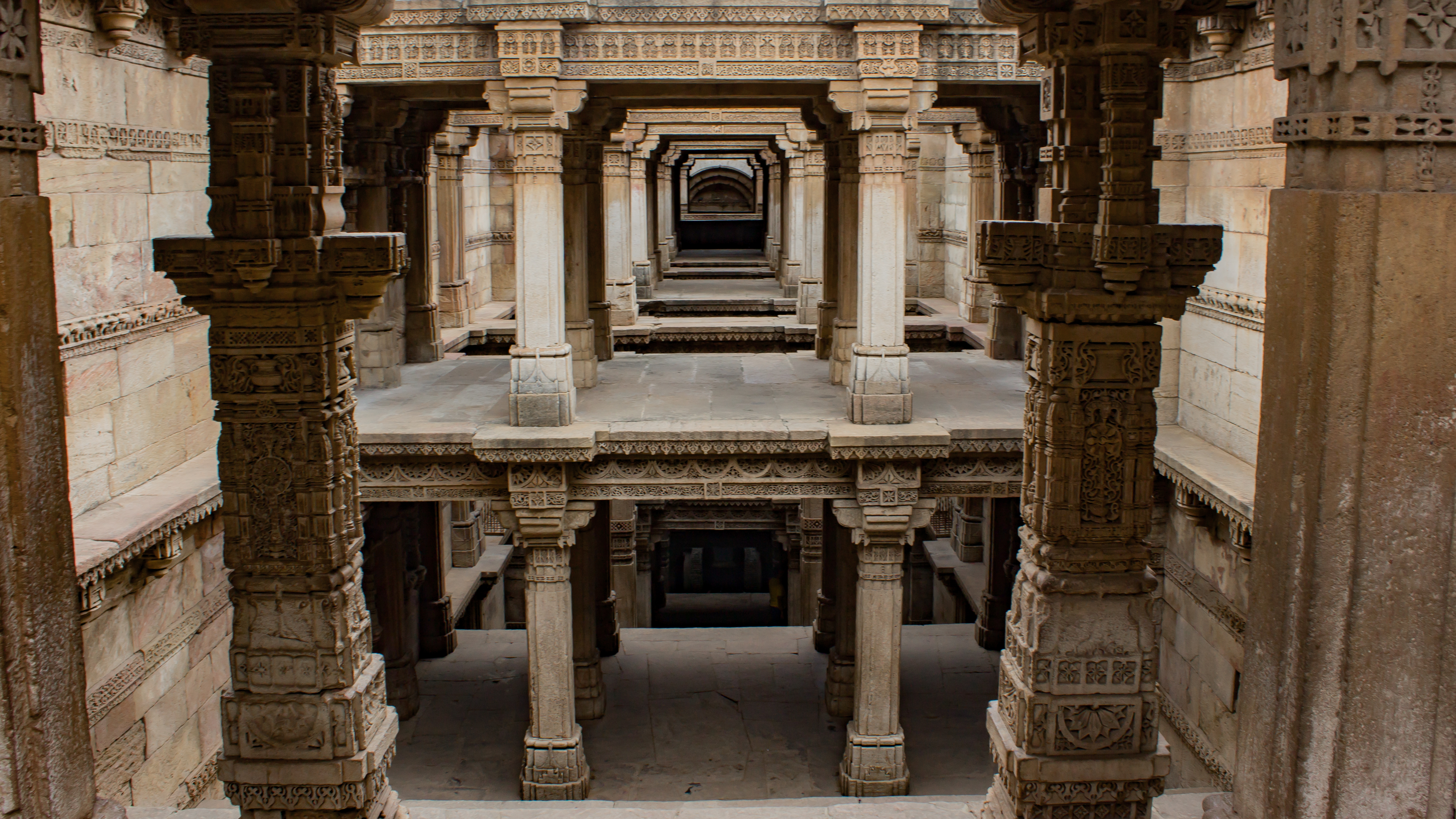
The new capital city was planned by Chief Architect H.K. Mewada, educated at Cornell University, and his assistant
Prakash M Apte.
Gandhinagar has an average elevation of 81 metres (266 feet). The city sits on the banks of the Sabarmati River, in
north-central-East Gujarat. The 20,543 km2 Area Around Gandhinagar is defined by Gujarat capital Territory. It spans an
area of 205 km2 (79 sq mi). The river frequently dries up in the summer, leaving only a small stream of water.
Gandhinagar is India's tree capital With 54% green cover on its land area.
Sardar Vallabhbhai Patel International Airport located in Ahmedabad is 18 km away from Gandhinagar, providing both
domestic and international flights.
Gandhinagar Capital railway station (GNC ) is located in Sector 14. Many trains running on the western zones pass through
Gandhinagar. Currently there are 5 trains running from this station in which 3 are express trains and 2 are MEMU trains.
Jaipur-Bandra Garib Rath, Haridwar mail for Delhi and Haridwar and Shanti Express for Indore Junction BG are main express
trains running through this station.
The Governing Body of Gujarat planned for rapid transit in the city by proposing the Metro-Link Express for Gandhinagar
and Ahmedabad (MEGA) also known as the Ahmedabad Metro. The contract for the four corridors of the system were awarded
to Delhi Metro Rail Corporation (DMRC) which also manages the Delhi Metro.Delhi Metro carried out a
pre-feasibility survey in 2004–05. In 2003, when the project was conceived, its cost was worked out at Rs 45 billion.
Akshardham Temple or Swaminarayan Temple is one of the most popular temples of Gandhinagar. It is located just 2 km away
from the main city and was constructed by Bochasanwasi Akshar Purushottam Swaminarayan Sanstha (BAPS). The BAPS was
established by Shastriji Maharaj in 1907, was opened for public in 1992.
Adalaj ni Vav is the famous Step Well, which is situated at around 18 km from the main city of Gandhinagar. This well is
located in the Adalaj Village and is popular among tourists for its intricate carvings. Constructed by Queen Rudabai in
1499, it was one of the main stopping points for travellers and caravans passing through this trade route.
Indroda Nature Park is also known as the Indroda Dinosaur and Fossil Park. This park is part of the Sarita Udhyan, which
is situated in the famous Indroda village in Sector 9. Animal species like deer, hare, porcupine, wild boar and various
other mammals and reptiles can be seen at the park.
Sarita Udhyan is located in the Sector 9 of the Gandhinagar city, along the banks of Sabarmati River. This beautiful
garden features various trees and recreation facilities. It is situated in the Indroda Village and has a popular deer
park.
Capital Complex is situated in Sector 10, in the centre of the city. This complex houses various government offices like
Vithalbhai Patel Bhavan and Vidhan Sabha. It also has Sardar Bhavan and Narmada Bhavan, along with offices of all the
heads of the departments.
Hanumanji Temple is a holy tourist attraction, which is visited by several devotees on daily basis. The main deity in
this temple is Lord Hanuman, whose idol is saffron in colour. Tuesday and Saturday are the two main days of worshipping
in this temple, which is easily accessible from the main city by local transport facilities like taxis and buses.
Craftsmen's Village is situated in Pethapur Village, which is just 7 km away from Gandhinagar. This village is located
towards the backside of Sabarmati River and was once famous for the Bandhini sarees. Wooden printing blocks made at this
village are exported to countries like Singapore. These wooden blocks are carved with beautiful patterns for
hand-printing on cloth.
Geography
Climate
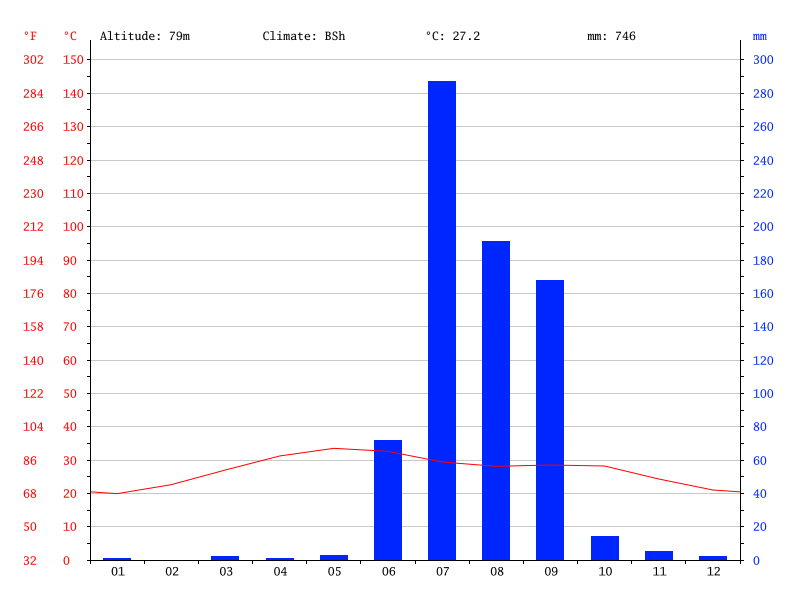
Gandhinagar has a tropical wet and dry climate with three main seasons: summer, monsoon and winter. The climate is
generally dry and hot outside of the monsoon season. The weather is hot to severely hot from March to June when the
maximum temperature stays in the range of 36 to 42 °C (97 to 108 °F), and the minimum in the range of 19 to 27 °C
(66 to 81 °F). It is pleasant in the winter days and quite chilling in the night during December to February.
The average maximum temperature is around 29 °C (84 °F), the average minimum is 14 °C (57 °F), and the climate is
extremely dry. The southwest monsoon brings a humid climate from mid-June to mid-September.The average annual rainfall
is around 803.4 mm (31.63 in).
Transport

Rail
Ahmedabad Railway Station in Kalupur Ahmedabad is the nearest rail junction (25 km away) which provides connectivity with
all the major cities and towns of India. The Indian Railways transports are Available for Moving in Northern India &
Eastern India From Kalol Railway Station.
Metro-Link Express for Gandhinagar and Ahmedabad
The DMRC (Delhi Metro Rail Corporation Ltd) has already done its techno-feasibility study and submitted its report.
Tourists Places in Gandhinagar
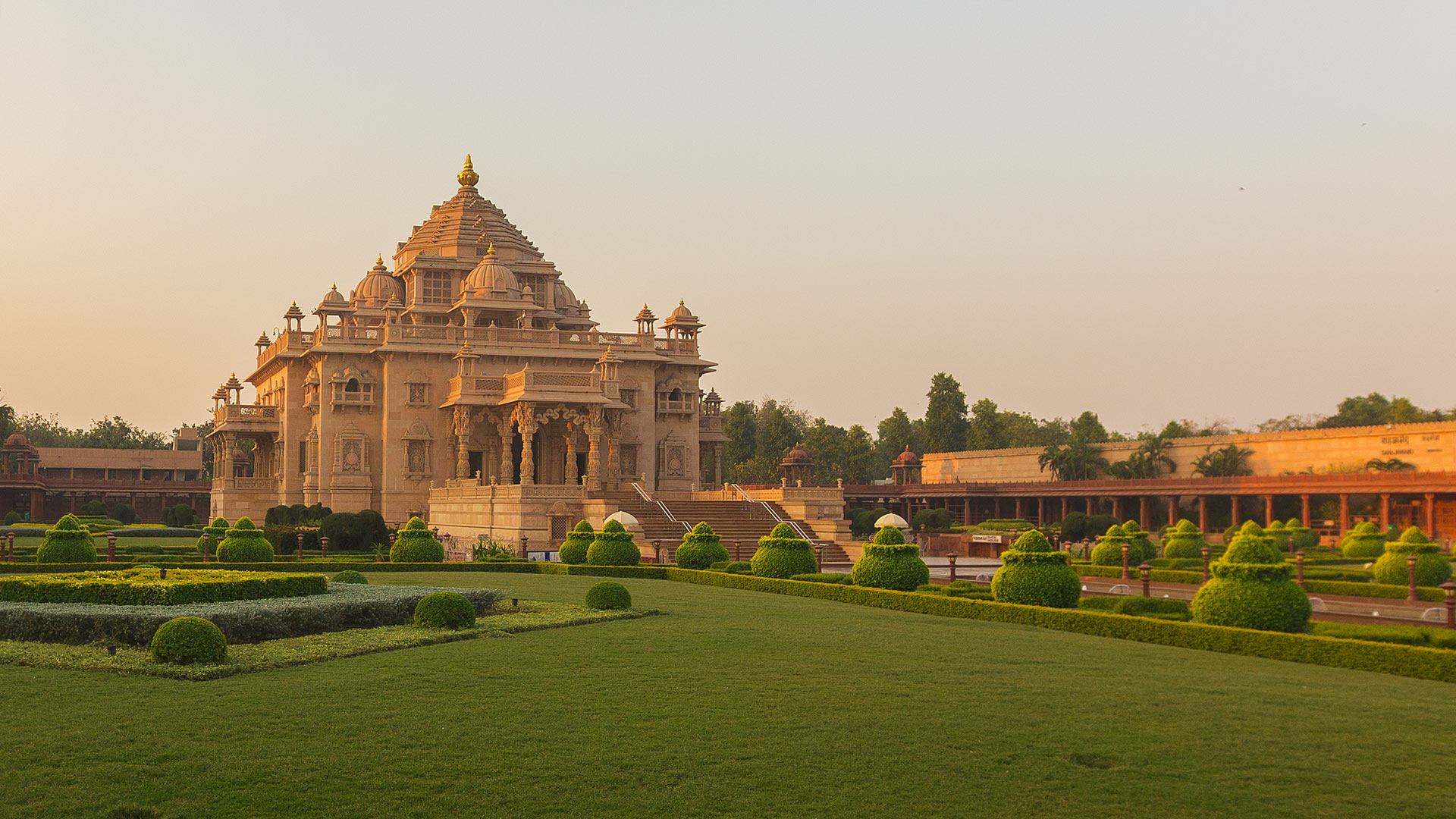
Akshardham Temple
This temple has over 100 pillars, balconies, a podium and around 17 domes. The entire temple features more than two
hundred windows. Moreover, it features an idol of Swaminarayan in the central hall.
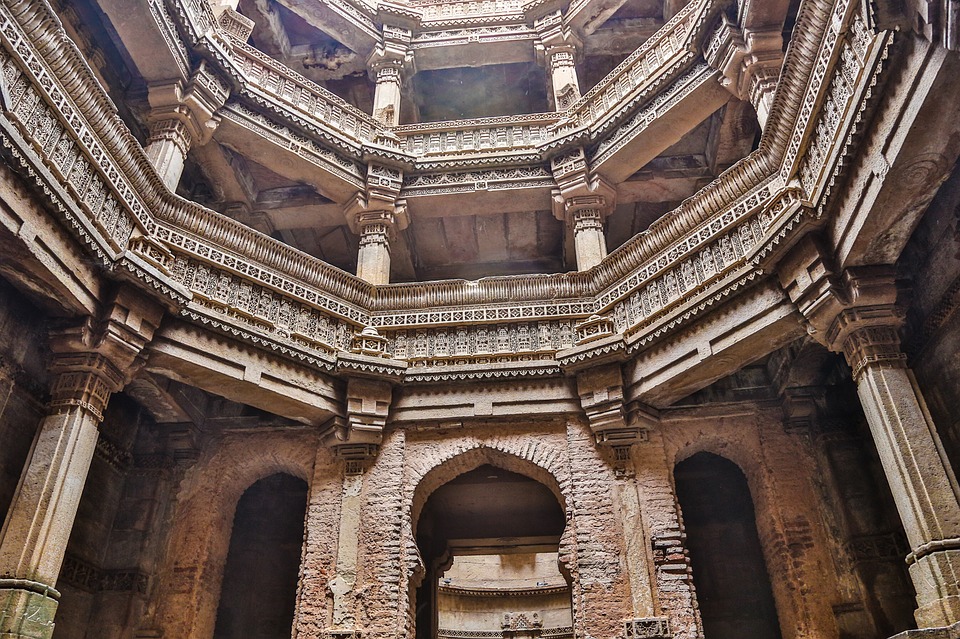
Adalaj
This is a four level well which features carvings of animals, flowers and Hindu Gods and Goddesses. Direct buses and
taxis are available from Gandhinagar and Ahmedabad to travel to this place.

Indroda Nature Park
A year-round tourist attraction, the park is famous for its Deer Park and Dinosaur Park. Dinosaur Park is regarded as the
Jurassic Park of India and is world’s second largest hatchery of dinosaur eggs. Tourists coming to this park can see
different kinds of dinosaur models like Titanosaurus, Stegosaurus and many other species.
It was established by the Geological Survey of India (GSI) and is currently managed by the Gujarat Ecological and Research
Foundation (GEER).
s
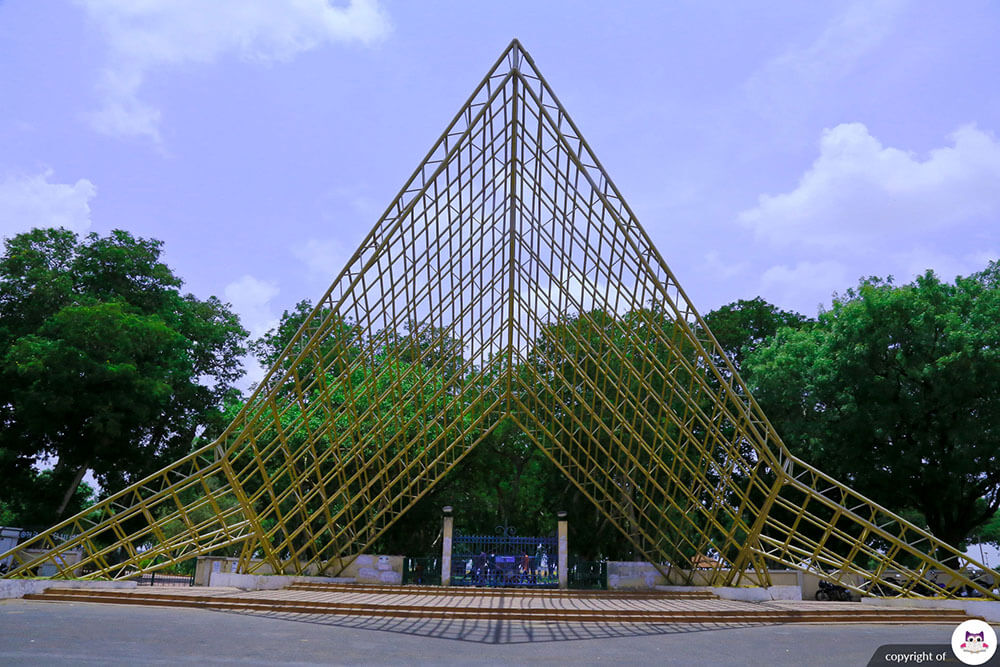
Sarita Udhyan
This is a well-known picnic spot in the city of Gandhinagar which can be visited throughout the year. Sarita Udhyan is
located in the centre of the city and can be easily reached through different transportation modes, like buses, taxis and
auto rickshaws.

Capital Complex
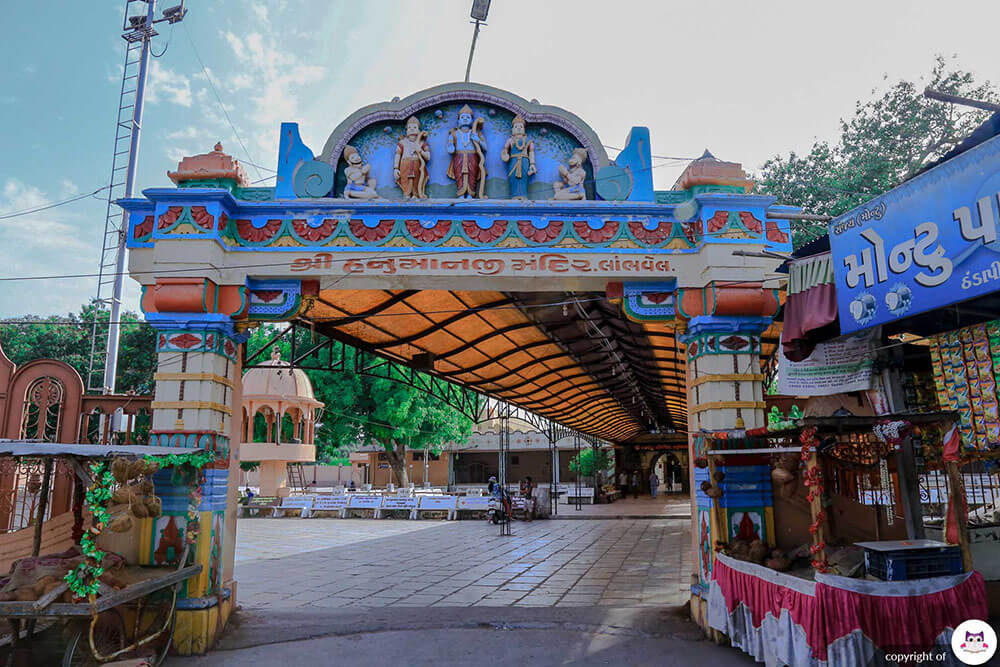
Hanumanji Temple
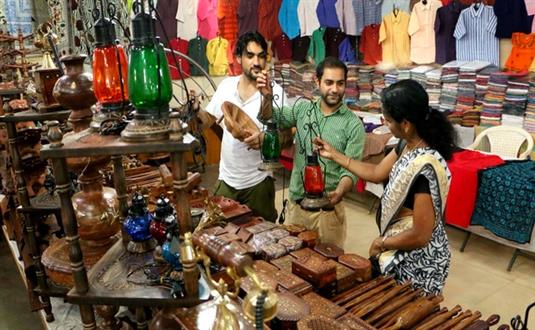
Craftsmen's Village
